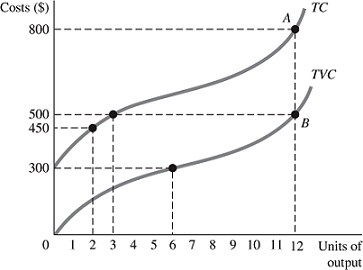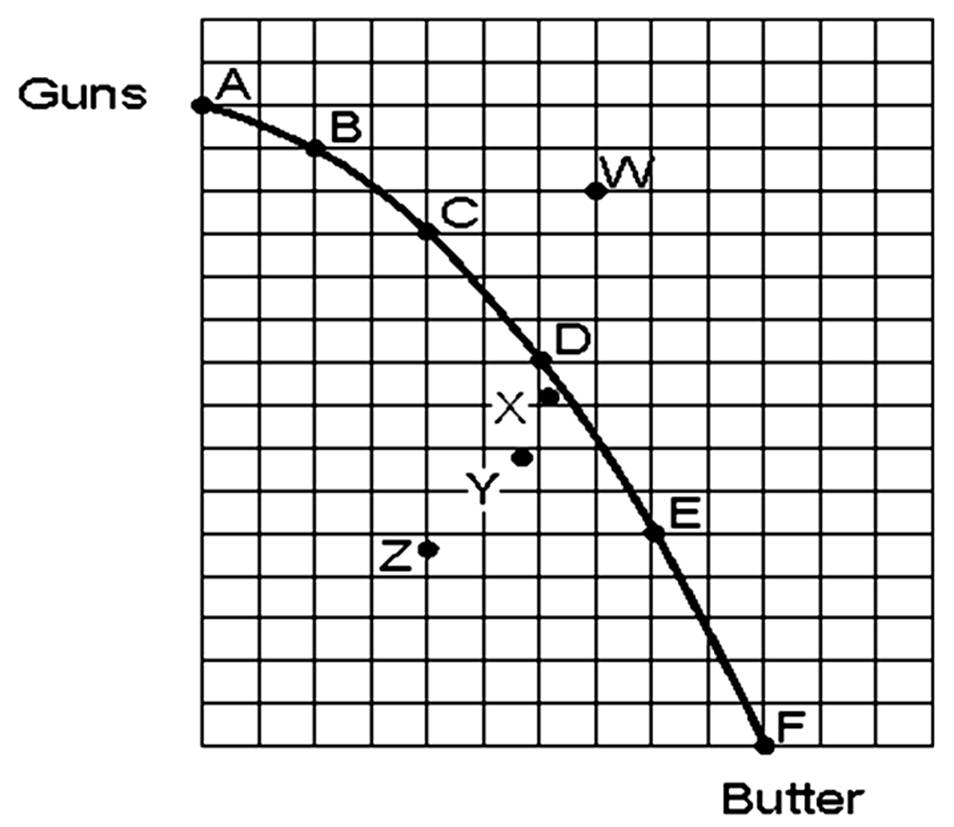Refer to the information provided in Figure 8.4 below to answer the question(s) that follow.  Figure 8.4 Refer to Figure 8.4. Micro Oven's average fixed costs of producing three units of output are
Figure 8.4 Refer to Figure 8.4. Micro Oven's average fixed costs of producing three units of output are
A. $100.
B. $150.
C. $166.67.
D. indeterminate from this information.
Answer: A
You might also like to view...
If the economy was producing at point X and moved to point Y,

A. it would have moved from where the economy operates most of the time to a severe recession.
B. it would have moved from where the economy operates most of the time to a depression.
C. the unemployment rate would increase.
D. it would have moved from where the economy operates most of the time to a severe recession AND the unemployment rate would increase.
According to your text, competition generally requires
A) fixed costs. B) fixed prices. C) fixed profits. D) detailed government regulation. E) none of the above.
Suppose firms in an industry hire unskilled labor and skilled labor. Unskilled labor is a substitute for capital and skilled labor is a complement with capital. A decrease in the real price of capital would
A) cause the demand for labor to increase, raising wages of both skilled and unskilled labor. B) cause the demand for unskilled labor to increase and the demand for skilled labor to decrease. The wage of unskilled labor would rise relative to the wage of skilled labor. C) cause the demand for unskilled labor to decrease and the demand for skilled labor to increase. The wage of unskilled labor would decrease relative to the wage of skilled labor. D) cause the demand for both kinds of labor to decrease. Wages rates of both kinds of labor would decrease too.
Which of the following statements accurately expresses the assumptions on which new Keynesian and new classical theory are based? a. New Keynesian economics assumes that the economy can reach equilibrium below thenatural rate of unemployment, whereas new classical economics assumes thatmacroeconomic equilibrium is always at the natural rate of unemployment
b. New Keynesian economics maintains that government intervention is unnecessary,whereas classical economics supports an active government role. c. New Keynesian economics assumes that the long-run Phillips curve is vertical,whereas new classical economics views the long-run Phillips curve as horizontal. d. New Keynesian economics assumes that all prices are flexible, whereas new classical economics applies a fixed-price model. e. New Keynesian economics emphasizes short-run reductions in inflation rates, whereas new classical economics focuses on short-run reductions in the unemployment rate.